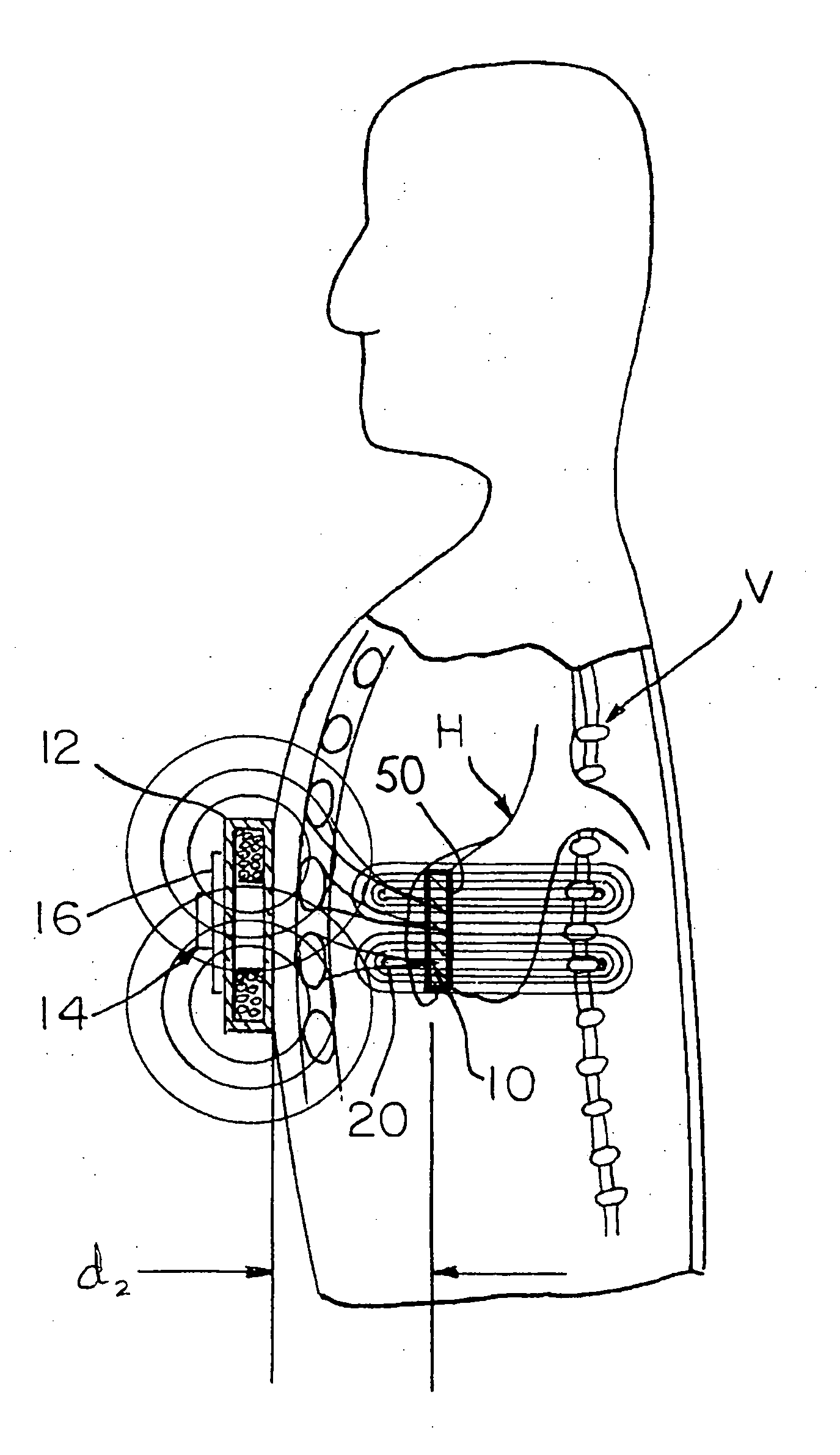Cardiac tissue energy dispersion device
a tissue energy dispersion and energy dispersion technology, applied in the field of tissue energy dispersion devices, can solve the problems of weakened or ineffective cardiac muscles, affecting the electrical conduction and overall mechanical performance of the heart, and affecting the cardiac pumping function, so as to achieve the effect of enhancing cardiac outpu
- Summary
- Abstract
- Description
- Claims
- Application Information
AI Technical Summary
Benefits of technology
Problems solved by technology
Method used
Image
Examples
Embodiment Construction
[0020]FIG. 1 is a side sectional view taken through the human body and the cardiac assist device of the present invention, which is shown in non-compressive relation with the human heart.
[0021] In the illustrated embodiment, the device includes a magnetic mat 10 which is adapted to be mounted inside the human body inside of the rib cage R, near the heart H. Preferably, the mat 10 is a permanent magnet made from a flexible ferro-magnetic material, including but not limited to samarium cobalt, neodymium iron, and neodymium iron boron (NeFeBo). It can be appreciated, however, that the mat 10 may comprise other materials (such as a superconductive material) so long as the mat 10 is sufficiently responsive to application of an electromagnetic field to compress the heart in accordance with the principles of the present invention. Regardless of the material used, however, the exterior surface of the mat should be chemically inert, and not immunogenic, so that it does not react with blood,...
PUM
 Login to View More
Login to View More Abstract
Description
Claims
Application Information
 Login to View More
Login to View More - R&D
- Intellectual Property
- Life Sciences
- Materials
- Tech Scout
- Unparalleled Data Quality
- Higher Quality Content
- 60% Fewer Hallucinations
Browse by: Latest US Patents, China's latest patents, Technical Efficacy Thesaurus, Application Domain, Technology Topic, Popular Technical Reports.
© 2025 PatSnap. All rights reserved.Legal|Privacy policy|Modern Slavery Act Transparency Statement|Sitemap|About US| Contact US: help@patsnap.com



